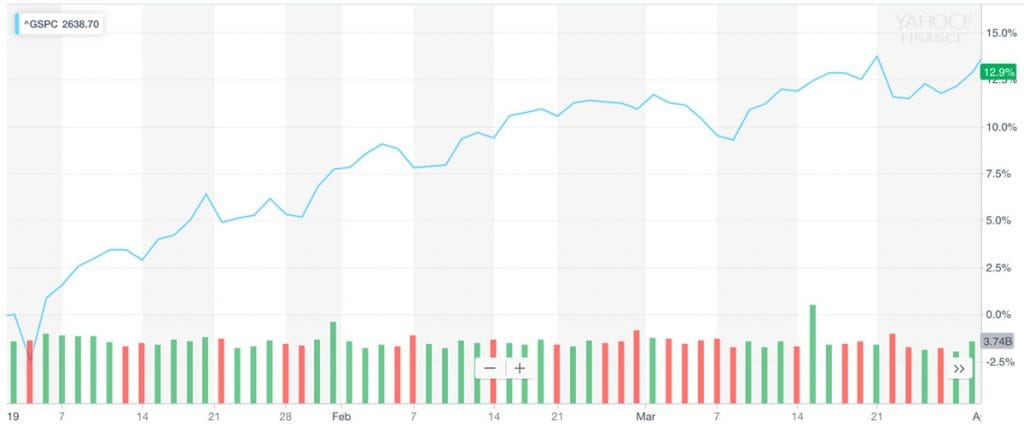Q1 2019 Recap & Commentary

Thankfully, the financial markets rebounded strongly from the dismal end to 2018. If we had to summarize the Q1 2019 market performance in a sentence, it would be this. Markets rebounded strongly from the fourth quarter selloff but began slowing as global growth fears and recession risks increased.
As a reminder, why did stocks sell off so much in Q4 2018?
Concerns of slowing global growth, tighter monetary policies, and geopolitical uncertainty weighed on markets and produced a massive selloff.
What was the correct investment strategy at the time?
To buy. Investors panicked. The market became oversold.
Why did January come roaring back +8%?
- The Federal Reserve said it would be patient with more interest rate increases.
- Increasing rates is a form of monetary tightening used to slow down overheating economies and combat rising inflation because inflation pressures were muted.
- China and the White House agreed to a trade war truce until March 1st.
- Investors realized the December sell-off was too deep, they came back into the market to buy stocks at discounted prices. This caused prices to rise.
What is inflation?
Inflation is a measure of how prices change. For example, a dress shirt in 1900 cost $1. Prices have risen significantly since then.
Why does everyone care so much?
The CPI (Consumer Price Index) and PCE (Personal Consumption Expenditures) price index are two roughly similar inflation measures. The CPI is based on what households buy. The PCE is based on what businesses sell.
The Federal Reserve is tasked with price stability and maximum employment. They currently define price stability as a 2% inflation target. In January, the latest inflation number fell to 1.9%, right on target. The Fed determined they could be patient with more rate increases.
Why did February continue to roar +3.2%?
- For similar reasons as January, the Fed meeting minutes were released.
- They confirmed the Fed’s commitment to “patience.”
- Constructive Chinese-US trade talks continued.
- Enough progress was made to avert the March 1st tariff increase.
Why was March a little choppy?
- All the momentum from January finally wore off.
- The Fed’s excitement slowing down interest rate hikes worried investors that there could actually be something wrong with the global economy.
- Nonfarm payroll data was much lower than expected.
- The U.S. yield curve inverted, a historical predictor of recessions.
What is the Nonfarm payroll data?
This is used as a broad gauge of employment health in the U.S. It covers 80% of workers that produce the entire GDP of the U.S. The main statistics are the number of additional jobs created in the previous month and wage growth.
Why does everyone care so much?
The January report, released in February, was unusually positive. Investors were curious to see if it would continue in February. The February number, released March 8, was expected to be +200k jobs. It was actually +20k jobs. This further made investors nervous that economic growth could be weakening in Q1 2019.
If the yield curve is just inverted, doesn’t that mean the recession apocalypse is imminent?
No. Historically, it has taken up to a few years for a recession to occur after the yield curve inverts. There is also a significant argument that this time is different because of the unprecedented monetary policies implemented after 2008.
To Conclude
Though it’s been an exciting start to Q1 2019, we don’t want our investors worrying about every new piece of data coming out. That is our job. We want our investors to know what these terms mean and not be nervous about the constant news headlines.
In fact, the next time you are out with friends, feel free to impress them with your knowledge of the difference between CPI and PCE. It’s one of our favorite things to do at dinner parties.


